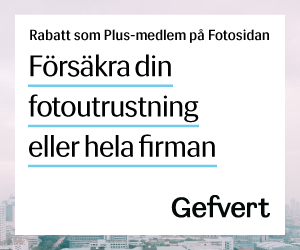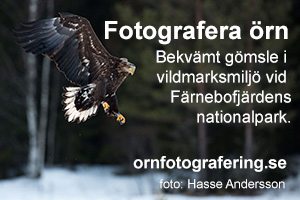Rob Galbraith gör sig lustig över videofunktionen i D90 (
http://www.robgalbraith.com/bins/multi_page.asp?cid=7-9314-9569):
"D-Movie mode Nikon is the first to offer video recording capabilities in a 35mm-style digital SLR, and its no-frills implementation in the D90 is likely to be equal parts fun and frustration.
The fun will come from having this capability built into what is likely to be a fine consumer-level digital SLR camera, and potentially from the 1280 x 720 pixel video quality, which should be and probably will be superb (as of this writing, we haven't seen any clips captured with the camera).
If the video quality is top notch, then the frustration will come from the scarcity of typical video camera features in the D90, and how their absence will inevitably limit the usefulness of its D-Movie mode. More on that in a moment.
D-Movie mode offers three movie sizes, 1280 x 720 (equivalent to 720p HD resolution), 640 x 424 and 320 x 216, all at 24 fps. The compression format is Motion JPEG; movie files emerge from the camera with an .avi extension (and can be imported directly to an editor like iMovie without an additional conversion step).
Hear Ye: The D90's microphone (Photo courtesy Nikon)
The camera will record clips up to five minutes long at 1280 x 720 pixels (20 minutes at the smaller movie sizes) before recording is stopped to give the image sensor an opportunity to cool. The file size for a typical five minute, 1280 x 720 pixel clip is roughly 600MB. There's no control over the JPEG compression level. A mic on the front of the camera picks up audio.
Video capture can be started and stopped with the OK button at the centre of the 4-way controller (capture is also automatically stopped by pressing the shutter button to take a still picture). The D90 allows you to select the aperture (from wide open to f/8) prior to commencing, then it handles the adjusting of ISO and shutter speed automatically as needed to maintain video brightness as lighting conditions change during recording. To disable automatic exposure adjustment, it's possible to lock exposure prior to beginning the recording.
The recording of audio can be turned off. If a lens with Vibration Reduction (VR) technology is attached, its VR stabilization will automatically kick in when recording commences.
This all sounds good so far, but that's also about where the list of D90 video features ends. Auto WB, as well as the selection of an alternate white balance setting, is disabled during recording, so white balance has to be firmed up before you start. Autofocus is also inactive, leaving manual focus as the only focus option while a movie is being made. Zooming will be similarly manual, since there are no powered F-mount Nikkor zoom lenses available, though the camera itself can't be faulted for that of course. But, the D90's D-Movie mode lacks any sort of digital zoom which, given the expected sensor quality, could have been both useful and had a minimal negative impact on video quality if it were limited to 2X or so.
Audio is mono only, with no provision for plugging in an external microphone. Other than turning the mic off, there are no audio options such as manual level adjustment or wind filtering.
Based on its feature set, the D90's D-Movie mode will be about as restrictive as the typical video function found in an inexpensive compact digital camera, though the D90 will probably deliver profoundly better video quality and you'll have more focal length options. Nikon gets full marks for being first, ahead of even longtime video camera makers Canon and Sony, but we can't help wish they aimed a little higher in their first attempt at digital SLR video. The addition of Auto WB, autofocus (even if somewhat slow), manual audio level setting and a mic jack would have made the D90 dramatically more useful as a video camera.
If you're a newspaper photographer keen to dump the dedicated video gear you're carrying around, the D90 is probably not going to be the model that enables you to do that. It will allow you to do nifty shallow focus video with wide aperture telephoto lenses, an effect that isn't readily done with consumer video equipment, or you can go wide with lenses such as the AF DX Fisheye-Nikkor 10.5mm f/2.8G ED for another specialized video look. But the D90's overall lack of video camera-ness is likely to relegate its D-Movie mode to such specialty uses, while as a working shooter you'll continue to mostly rely on a full-fledged video camera to gather footage for your newspaper's website.
If, like me, you're both a photographer and a Dad, and you want to record video of your kids playing soccer, on vacation or during special events, it remains to be seen if the D90's limited video features will be sufficiently offset by its possibly sweet video quality. I rely on a Canon PowerShot S5 IS still camera for weekend shooting now, in large part because its video mode has all of the missing features described above (except for an external mic jack), plus a tilt-and-swivel rear LCD, stereo mics and a smooth 12X power zoom. In addition to having features such as Auto WB and autofocus while capturing video, it has implemented them well. Plus, it delivers decent video and audio quality too.
So, the S5 IS absolutely clobbers the D90 based on their respective video features. But the Canon point-and-shoot is limited to 640 x 480 pixels when capturing full-motion video, and its tiny sensor is almost certainly no match for the D90's. So, the new Nikon is in a position to whack the S5 IS right back with sharp, clear HD 720p movies.
The point of this rant? If the Nikon D90 produces great quality video, still photographers who have a need for moving pictures too are going to be faced with quite a conundrum."







